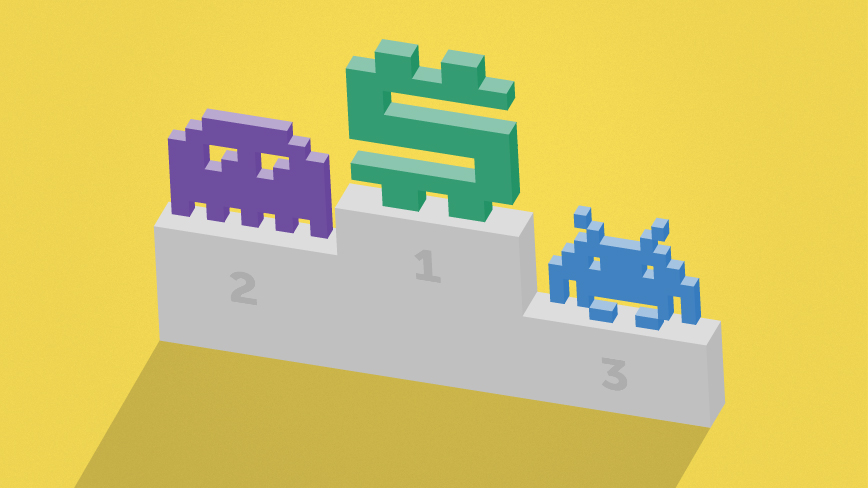Level up your eSports marketing knowledge with these insights on how major brands are sponsoring and expanding this growing worldwide pastime.
One might never think that statements about “dramatic comebacks,” “underdogs” and teams “withdrawing from the tournament because of injury problems” would be uttered about young men and women playing video games in front of computer screens, but the reality in 2016 is that professional video game tournaments are very real.
And they’ve gotten big. How big? Over 100,000 people attended a recent Intel-sponsored Extreme Masters gaming tournament in Katowice, Poland. A Major League Gaming (MLG) event hosted in Columbus, Ohio, drew over 37 million viewing hours total and 6.2 million viewing hours per day.
The viewership market for eSports has gotten so big that ESPN has decided to extend coverage to maintain relevance. Worldwide eSports markets could offer the potential for unprecedented and massive exposures for marketers willing to sit up and pay attention. The following are some of the current strategies they can look to when seeking success in this keyboard and mouse-powered market:
Team and Event Sponsorships
Sponsorships have been the driving force behind eSports growth, says Fortune magazine, and the market’s saturation point seems to stretch into infinity. Some 78% or $578.6 million in revenues for the sport are generated through sponsorships alone.
ESports sponsorship opportunities range from Nissan sponsoring North American professional League of Legends players on Team Curse to Intel’s sponsorship of the Extreme Masters tournament series. Of course, just like in other professional sports, more granular opportunities arise for other types of creative sponsorships.
Event Advertising
Live event streams watched by millions create an opportunity for big-time exposures. Now, with networks like ESPN and TBS getting in on the action, live TV broadcasts could mean a whole new frontier for advertisers. TBS has neglected to share any media buys for their professional gaming slots so far, which are set to air weekly in Friday night slots, but one can expect inevitable advertisements for other video game programming.
However, the marketing potential of the events themselves should not be overlooked. ESports tournaments are more akin to conventions than traditional sports matches, opening opportunities for event marketing complete with on-site demos and installation displays.
Taking eSports Marketing to the Next Level
Some brands seeking a young, educated, tech-inclined demographic seriously risk missing out on enormous opportunities when they fail to take eSports marketing seriously. ESports fans are a captive, niche audience in the coveted 16-34 demographic, which is known for being fiercely loyal to certain product lines, vis-a-vis their favorite console brands and game franchise series. They are also more diverse than expected — U.S. eSports viewership is currently 27% female — with efforts being made to expand the base and diversity even more.
The audience numbers are especially staggering. Intel Extreme Master’s aforementioned championship in Katowice drew 3.2 million Facebook and Twitter engagements and hundreds of millions of impressions across more than 30 million unique users. It may still be too early to estimate the true value of this audience, but the $970 million purchase of streaming platform Twitch by Amazon indicates how far major brands are willing to go to get a piece of the action.
Now that colleges are starting to cultivate eSports teams within their own campus and people are even betting on fantasy eSports leagues, a time when familiar Super Bowl advertising brands vie for slots during Counter Strike and League of Legends matches could not be very far off in the future at all.


Great article and on-point. Being a former eSports player and still connected with the friends/organizations that compete in the various tournaments mentioned such as IEM Katowice, DreamHack and MLG Columbus (which is the first $1 million prize pool for a North American major not sponsored by Valve), I’d like to mention that most commercial breaks during these events are advertisements for HyperX, Sennheiser, Razer, BenQ and etc (which are all considered top tier brands for gaming gear and peripherals). Often they’ll even have special flash sales where they’ll honor the event with a coupon code for the day that’ll give you 20% off your entire purchase on their website.
Needless to say, in the past few years, eSports has started to gain a tremendous amount of traction and recognition as a sport and enough to get the attention of high-octane sports players such as the below.
NRG eSports – currently a multi-gaming organization backed by Shaquille O’Neal and A-Rod
http://espn.go.com/esports/story/_/id/15000505/shaquille-oneal-alex-rodriguez-jimmy-rollins-invest-nrg-esports-teams
Echo Fox – another multi-gaming organization owned by former LA Lakers player, Rick Fox.
http://www.foxsports.com/buzzer/story/rick-fox-league-of-legends-interview-echo-fox-032216
While League of Legends is huge – I’d like to mention give mention to one of the largest prize pools in the history of eSports. The prize pool for DOTA: The International 2015 was nearly $18.5 million dollars with the #1 team (5 players) taking home $6.6 million. What’s more interesting is that the prize pool was community funded. For the “The International 2015” – the purchase of this package and/or items relative to the event (which is like a interactive/virtual playbill that costs $10 and contains all the information about the event and includes rewards for predictions, gameplay achievements and etc) 25% of it went towards the pool.